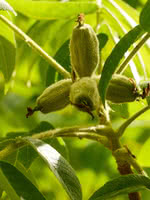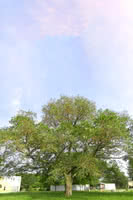Mon-Fri 9am - 5pm Mountain time
Butternut (White Walnut) vs Discovery Japanese Elm
Juglans cinerea
Ulmus davidiana var. japonica Discovery
NOT AVAILABLE THIS SEASON - MIGHT RETURN
Butternut is one of the few walnut varieties native to Canada. The nuts are sought after for their mild, sweet, and oily taste. Ensure this tree is planted in full sun and well-drained soil for best results.
Butternut is self-fertile but it has better yields when planted near other butternuts. It can survive in zone 2, but reliably produces nuts in zone 3.
A top CO2 absorbing species. Experts think this tree may help climate change more than others.
Discovery Japanese Elm is great for anyone who doesn't have a lot of time to maintain their trees as it doesn't drop many seeds. It has beautiful dark green foliage and is resistant to Dutch Elm Disease. This elm is similar in shape to the American Elm but is roughly 30% smaller. Instead of having an irregular and broad-shaped crown as other Japanese Elms do, the Discovery Japenses Elm has symmetrical branching, an upright growth form, and develops a classic vase-like crown.

